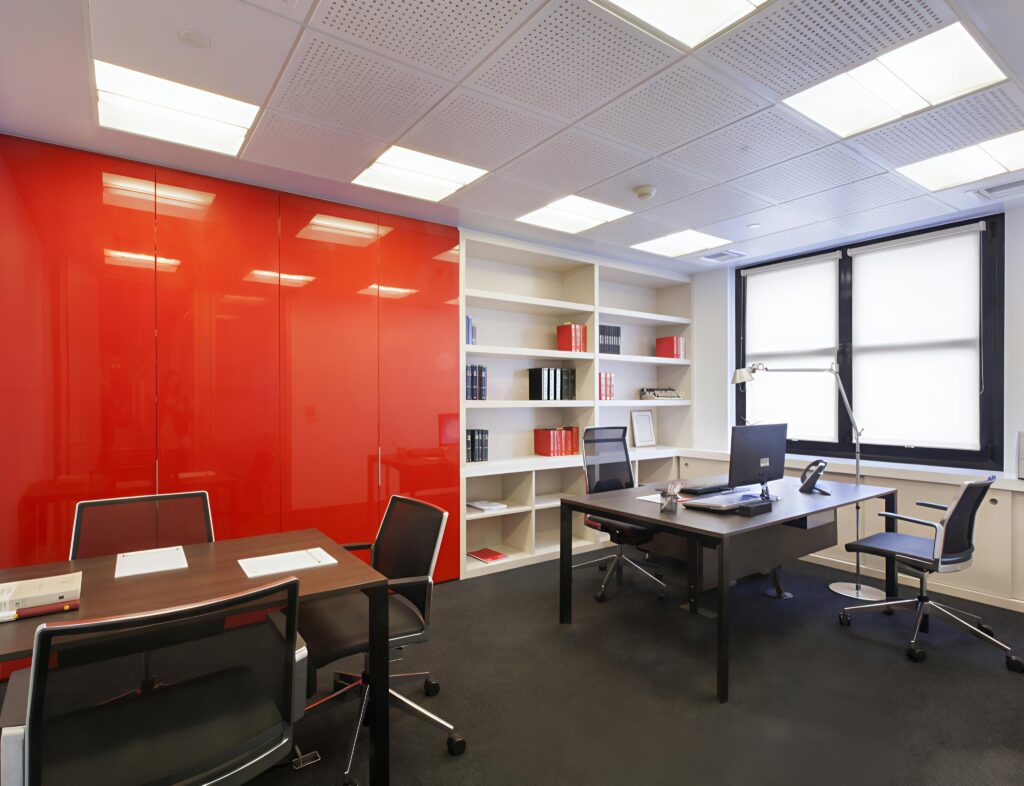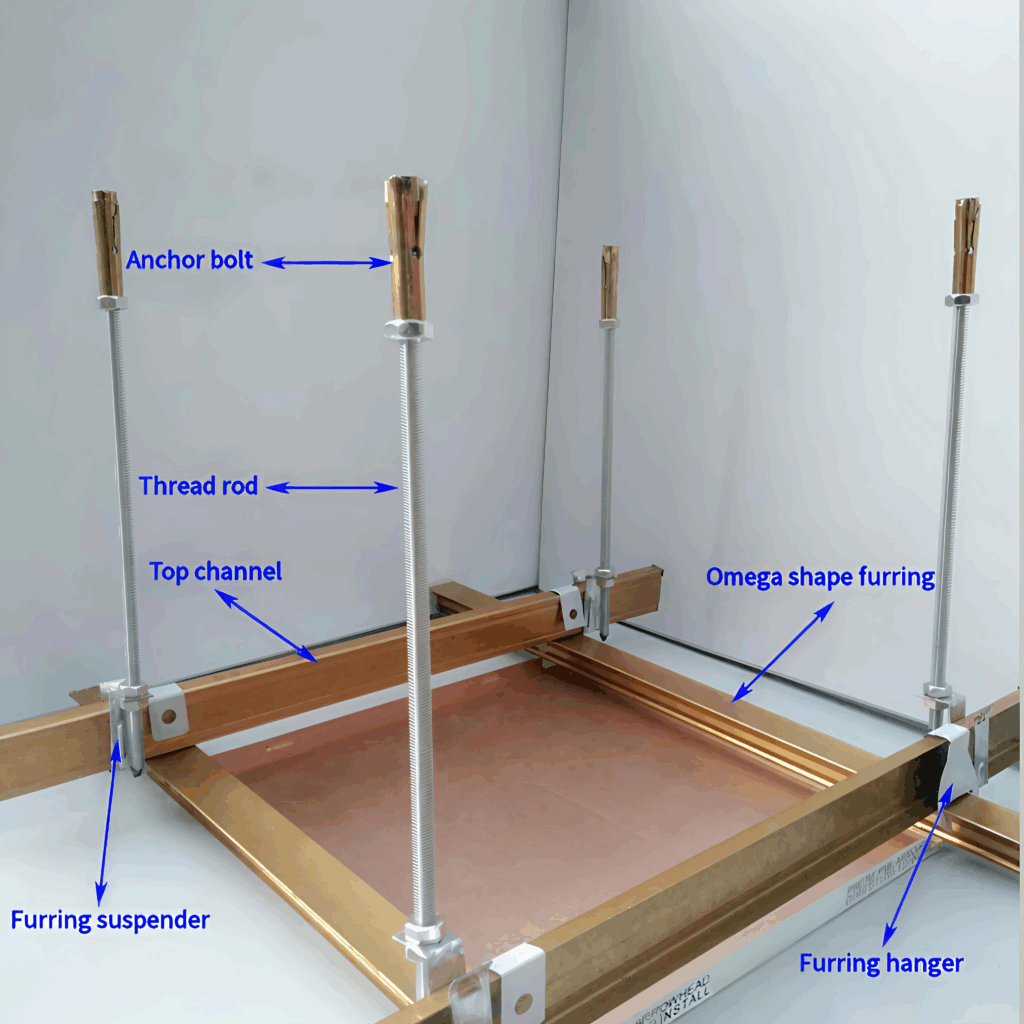A secondary ceiling, hungs below the main structural ceiling, used to conceal wiring, ductwork, or pipes.
A suspended ceiling is a secondary ceiling hungs below the main structural ceiling, providing aesthetics, acoustics, and utility access. It is crucial for enhancing design flexibility, improving sound control, and concealing mechanical systems. By offering a versatile and accessible ceiling solution, suspended ceilings support efficient construction, enhance interior quality, and contribute to successful project delivery by ensuring that interiors are well-finished, functional, and aligned with design intent and client expectations.
The often used materials of suspended ceiling includs plaster or gysum board, aluminum board, minerial wool board, plastic board, and etc. Large sized gysum board is always used to meet relatively complicated shape requirement, especially in home decoration scenarios. While, the aluminum and minerial wool ceiling panel are more often finded in business builings or compact rooms of home buildings, such as bathroom, kitchens.
Aluminum ceiling panel is become more popular recent years. Rectangular sized panel are more often used in business buildings, public buildings, such as meeting halls, railway stations, hospitals, airport stations, normally the sizes of ceiling panel are larger than that of residential buildings. The size maybe 600*600, 600*1200, 1200*1200, and etc. In addtion, there is always the requirement of mesh holes on the panel for public building so as to get better ventilation performance. While the size of panel for domestic use is relatively smaller, the dimension is 300*300, there is rarely a requirement to have mesh holes on ceiling panel surface for domestic application.




